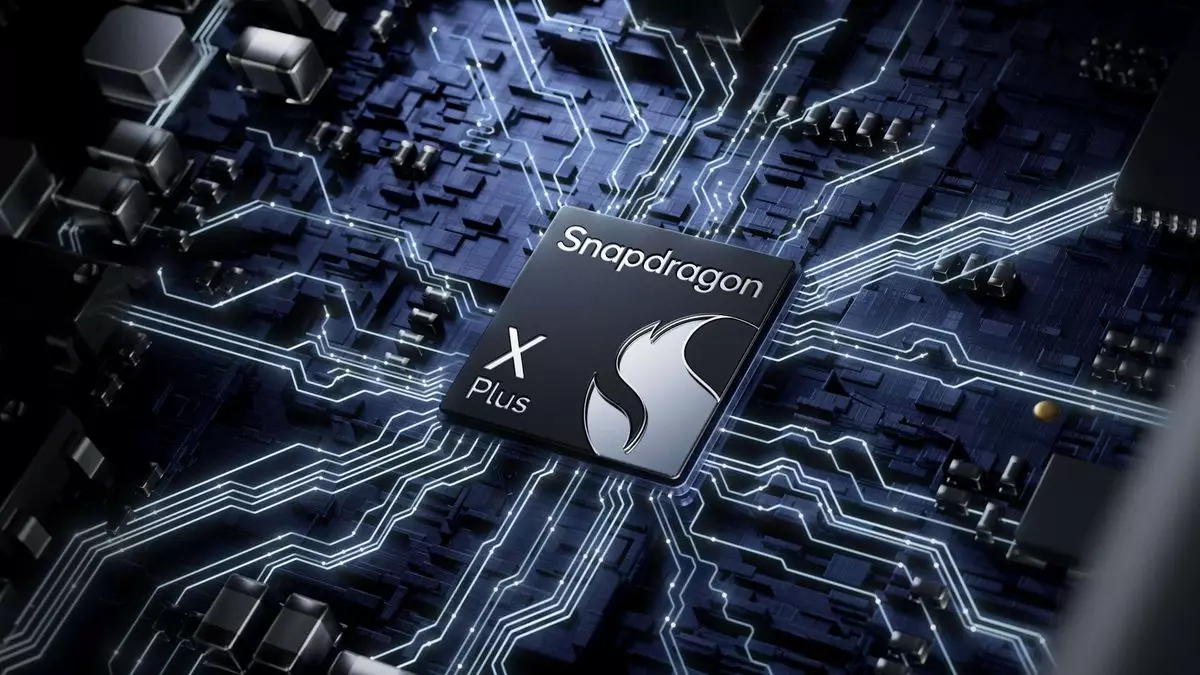The tech industry is rife with speculation, especially when large entities like Qualcomm and Intel are involved. Recent reports from reliable sources have claimed that Qualcomm is eyeing a full acquisition of Intel’s chip design business. However, as exciting as this narrative is, a critical examination reveals that such a merger is unlikely to come to fruition. The following analysis explores the financial, strategic, and regulatory hurdles surrounding this potential acquisition.
Qualcomm and Intel are industry titans, each holding significant roles in the semiconductor market. Qualcomm is predominantly known for its Snapdragon processors that power a wide array of mobile devices, while Intel maintains a dominant position in desktop and server CPUs. Although Qualcomm’s market capitalization exceeds that of Intel, the latter still leads in revenue and operating income. This contrast brings to light an essential factor: Qualcomm may have ambition but lacks the financial might to absorb Intel wholly.
With a robust cash reserve, Qualcomm can certainly pursue strategic partnerships or smaller acquisitions; however, acquiring a company as behemoth as Intel would present an astronomical financial challenge. The immediate question arises: Is Qualcomm’s interest truly about acquiring Intel or consolidating their own strategy in the chip market?
One prevailing theory is that Qualcomm’s interest in Intel revolves around acquiring licenses for the x86 architecture, a foundational aspect of today’s desktop CPUs. Qualcomm’s current line-up relies on Arm architecture, which poses compatibility concerns when running Windows applications natively. This has proven a barrier to the adoption of Qualcomm’s processors in laptops and other computing devices traditionally dominated by Intel’s architecture.
Obtaining a license for x86 chips could streamline Qualcomm’s operations, allowing the company to create processors compatible with existing software without the need for emulation. While purchasing a license could be more economical than a full acquisition, the uncertainty of Intel modifying terms and costs creates additional motivation for Qualcomm to consider an outright buyout. However, it’s essential to note that AMD, another key player, holds a substantial influence over the x86 licensing landscape, which complicates Qualcomm’s strategic calculations.
Despite any potential benefits, the reality is that regulatory scrutiny would likely derail any attempt at a Qualcomm-Intel merger. Historical precedents, like Nvidia’s unsuccessful acquisition of Arm, underscore the challenges firms face when seeking consolidation in the semiconductor market. Antitrust regulations are designed to foster competition and prevent monopolistic behavior; thus, any deal perceived to threaten market balance would be critically examined and likely obstructed.
Moreover, even if Qualcomm negotiated a deal with Intel amidst these hurdles, the backlash from competitors, industry analysts, and regulatory bodies could complicate the proceedings further, diminishing the feasibility of unification entirely. In an era where companies are heuristically evaluated based on their market share and consumer implications, this merger would raise red flags across jurisdictions.
Given that a full acquisition appears tenuous, there may be alternative pathways for Qualcomm and Intel to explore collaborative frameworks without necessitating a purchase. Joint ventures, strategic alliances, or co-developing chips tailored to augment their technological advancements could bolster both companies without the complications of an acquisition. Such partnerships could focus on leveraging Intel’s manufacturing capabilities to produce Snapdragon processors or developing chipsets that combine both architectures for improved compatibility and performance.
These collaborative engagements could yield mutual benefits and allow Qualcomm to tap into Intel’s resources, while Intel could gain from Qualcomm’s innovations in mobile chip processing.
In summation, while the notion of Qualcomm’s takeover of Intel stirs excitement in tech circles, a thorough analysis indicates that the merger is improbable. Both companies have their strengths and weaknesses, and the practicalities of acquisition overshadow the intrigue behind industry rumors. The financial feasibility, regulatory obstacles, and strategic motivations highlight the complexity of such a merger. As it stands, dialogue between these entities may remain focused on collaboration rather than acquisition. As always in the tech industry, speculation will continue to thrive until tangible developments unfold.


Leave a Reply